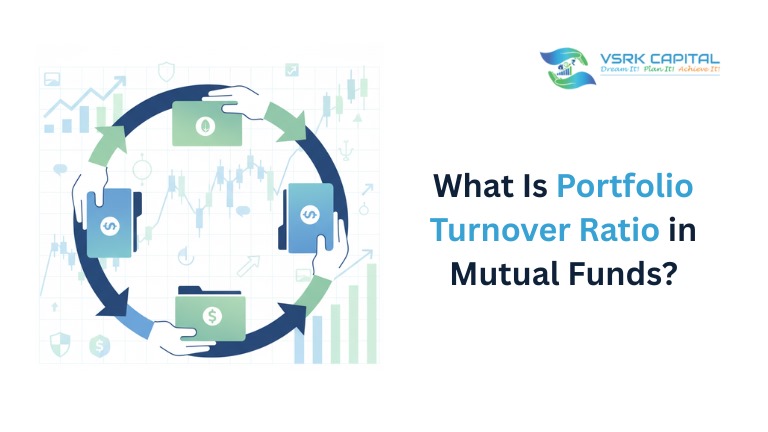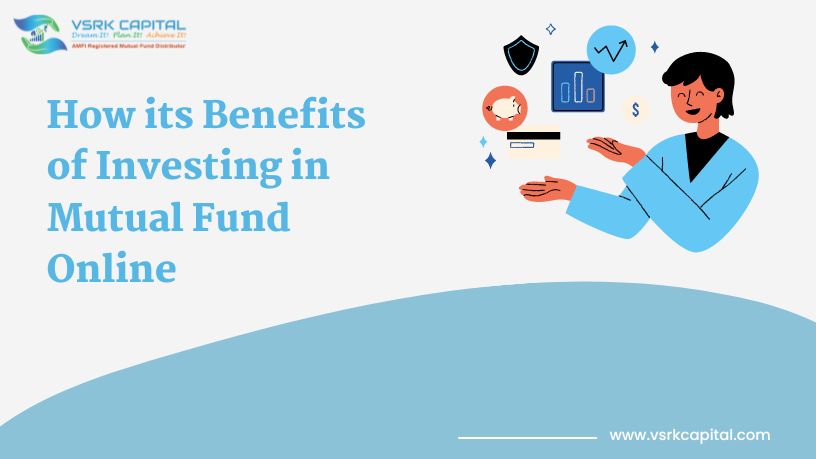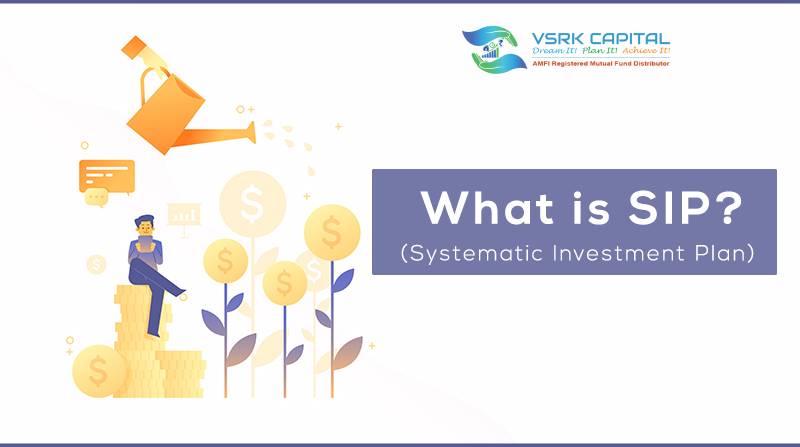
Understanding the Portfolio Turnover Ratio in Mutual Funds
Investing in mutual funds is a popular way to diversify your portfolio and achieve long-term wealth creation. However, to make informed decisions, investors must understand the nuances of fund management. One key metric that often goes unnoticed is the Portfolio Turnover Ratio.
The Portfolio Turnover Ratio reveals how frequently a fund’s holdings are bought and sold in a given period. Understanding it is crucial because it can impact expense ratio, tax implications, and the overall performance of your investments—especially if you are investing through a SIP.
What Is the Portfolio Turnover Ratio?
The Portfolio Turnover Ratio indicates the percentage of a mutual fund‘s holdings that are replaced within a year. It reflects the fund manager’s trading activity and gives investors insight into the fund’s investment strategy.
The formula to calculate turnover ratio is:
Where:
- Purchases: Total value of securities bought.
- Sales: Total value of securities sold.
- Average Net Assets: The average value of the fund’s assets during the period.
Example:
Suppose a mutual fund has $100 million in average assets, with $60 million in purchases and $40 million in sales. The Portfolio Turnover Ratio is calculated as:
This means that 40% of the fund’s holdings were replaced during the year.
Pro Tip: A moderate turnover ratio is generally better for SIP investors to avoid excessive transaction costs and tax liabilities.
High Turnover vs. Low Turnover Mutual Funds
The turnover ratio can vary widely depending on whether a fund is actively or passively managed. Here’s a comparison:
Feature | High Turnover Funds | Low Turnover Funds |
Management Style | Actively managed | Passively managed (index funds) |
Typical PTR | 75%–150% | 10%–40% |
Cost Implications | Higher transaction costs | Lower transaction costs |
Tax Impact | More short-term capital gains | Fewer taxable events |
Return Potential | Higher if strategy succeeds | Market-matching returns |
Risk Exposure | More volatile | Relatively stable |
High Turnover Funds
- Active Management:Fund managers frequently buy and sell securities to exploit market opportunities.
- Potential for Higher Returns:For example, the HDFC Mid-Cap Opportunities Fund had a turnover ratio of 95% in FY 2023, delivering a 15% annualized return over 3 years.
- Increased Costs & Tax Impact:High turnover ratio mutual funds incur greater brokerage fees and short-term capital gains taxes.
Low Turnover Funds
- Passive Management:Funds like the Nippon India Index Fund – Nifty 50 Plan have a portfolio turnover ratio of just 15–20%.
- Cost Efficiency:Less trading means lower expense ratio and fewer tax liabilities.
- Steady Returns:Returns may closely track the benchmark index, offering stability for SIP
How the Turnover Ratio Impacts Returns
The turnover ratio is not just a number; it has tangible effects on your investment:
- Transaction Costs:Every buy/sell generates brokerage fees. High portfolio churn in mutual funds can reduce net returns.
- Tax Implications:High turnover ratio leads to more short-term capital gains, taxed at 20% for equity funds in India, compared to 12.5% for long-term gains.
- Risk Exposure:Frequent trading can increase market volatility exposure. A fund with a high turnover ratio might outperform the market in bullish periods but may also underperform during corrections.
Investor Insight: If you invest via a SIP, prefer funds with moderate or low turnover ratio to reduce tax and cost impact.
How to Calculate Turnover Ratio: Simplified
To calculate the portfolio turnover ratio:
- Determine total purchases and sales of securities in a year.
- Identify the average net assets of the fund for the same period.
- Apply the formula:
Example:
A fund has $80 million in average assets, purchases worth $50 million, and sales worth $30 million.
This means roughly 38% of the fund’s portfolio was replaced in the year.
Expense Ratio and Tax Implication of High Turnover
Expense Ratio
The expense ratio shows the percentage of assets deducted annually to cover management fees, operational costs, and other charges. A high turnover ratio often increases the expense ratio, especially for actively managed funds.
Stat Insight: Actively managed equity funds in India have an average expense ratio of 1.8%, compared to 0.6% for index funds with low portfolio turnover ratio.
Tax Implication of High Turnover
High portfolio churn in mutual funds can trigger frequent taxable events:
- Short-term capital gains (STCG) on equity: 20%
- Long-term capital gains (LTCG) above ₹1 lakh: 10%
Example: If a fund sells holdings frequently and generates ₹1 lakh in STCG, a tax of ₹20,000 will apply, reducing investor returns.
Pro Tip: For long-term SIP investors, low-turnover funds often offer better after-tax growth.
Real Investor Scenario
Consider two SIP investors investing ₹10,000/month for 5 years:
Investor | Fund Type | PTR | Expense Ratio | Avg Annual Return | Tax Impact | Net Return |
A | Actively Managed Equity Fund | 95% | 1.8% | 15% | High STCG | 12.5% |
B | Passive Index Fund | 20% | 0.6% | 12% | Low LTCG | 11.3% |
Despite higher gross returns, Investor A’s high turnover ratio mutual fund results in a lower net return due to costs and taxes.
Historical Context & Statistics
- Equity-linked mutual fundsin India historically show an average portfolio turnover ratio of 60–80% for active funds.
- Index funds maintain turnover ratiosbelow 25%, reflecting minimal trading.
- Over the past decade, funds with high portfolio churn in mutual fundshave occasionally outperformed during bullish cycles but underperformed during corrections, highlighting the importance of understanding turnover ratio impact on returns.
VSRK Capital’s Perspective
According to VSRK Capital, an ideal portfolio turnover ratio should align with the fund’s investment strategy — not too aggressive, yet not too static.
Their philosophy emphasizes transparency, goal-based investing, and tax-efficient wealth creation.
VSRK Capital advises investors to:
- Choose funds where turnover supports the long-term goal of sustainable wealth creation.
- Focus on net returns after costs and taxes, not just raw performance numbers.
- Maintain discipline in SIPand diversified fund selection, guided by solid research.
In short, a well-balanced turnover ratio contributes to long-term stability, efficient tax outcomes, and better wealth growth — principles at the core of VSRK Capital’s investment approach.
Conclusion
The Portfolio Turnover Ratio is a vital metric that every mutual fund investor should monitor. High portfolio churn in mutual funds can amplify costs and taxes, affecting net returns. Meanwhile, low turnover ratio funds often provide cost efficiency and steady growth—ideal for long-term SIP investors.
By understanding the turnover ratio impact on returns, evaluating expense ratio, and considering tax implication of high turnover, you can make smarter investment choices tailored to your financial goals.
Investor Insight: While high portfolio turnover ratio can be exciting for aggressive investors, a balanced approach focusing on both returns and cost-effectiveness ensures long-term wealth creation.
For investors looking to hedge inflation and diversify portfolios, commodity ETFs can be a smart, tactical choice—when used with discipline and expert guidance.
FAQs
A good turnover ratio depends on the fund type. Actively managed funds may have higher portfolio turnover ratio mutual funds (70–120%), while passively managed funds have lower ratios (10–30%). Compare similar funds before investing.
High turnover ratio leads to frequent short-term capital gains, increasing the tax burden and reducing net returns. Low turnover ratio funds incur fewer taxable events.
Yes, if the fund manager’s strategy is effective. However, consider associated expense ratio and tax implication of high turnover.
The turnover ratio is disclosed in the fund’s annual report, prospectus, and financial data platforms like Value Research Online or Morningstar India.
Not necessarily. High turnover ratio mutual funds can deliver higher returns but come with increased costs and tax implications. Assess based on your SIP goals and risk appetite.










